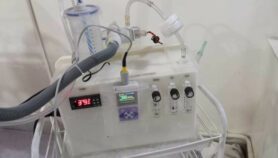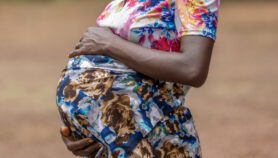By: Calvin Otieno
Send to a friend
The details you provide on this page will not be used to send unsolicited email, and will not be sold to a 3rd party. See privacy policy.
[NAIROBI] A major multinational study is calling for more research on the pathogens that cause diarrhoea, and better use of existing tools, to help control one of the leading killers of young children in the developing world.
The Global Enteric Multicenter Study (GEMS), published in The Lancet last month (13 May), was conducted in seven sites across Africa and Asia over three years, enrolling more than 20,000 children. It reports that one in five children under the age of two suffers from moderate-to-severe diarrhoea (MSD) each year, increasing their risk of death and stunted growth, and that this risk persists after an MSD episode.
It also finds that four pathogens are mostly responsible for MSD — rotavirus, Cryptosporidium, Shigella and ST-ETEC, a type of Escherichia coli, with rotavirus being the most common.
"Previous studies conducted on diarrhoeal diseases provided snapshots about the pathogens that drive this disease, but the results could not be compared or combined to provide a full picture because of the differences and limitations of the methods used," says Karen Kotloff, lead author of the study report and professor of paediatrics and medicine at the University of Maryland, United States.
She says rotavirus vaccines have been widely available to children in wealthy countries but developing countries have little access to vaccines that could prevent thousands of diarrhoea-related deaths each year.
"There are no licensed vaccines for Cryptosporidium, Shigella and ST-ETEC, although vaccines against the latter two bacteria are currently under development. Cryptosporidium was not considered a primary [pathogen] in the paediatric population of developing countries before GEMS — so there is little research on it," Kotloff tells SciDev.net.
Apart from new vaccines, research priorities should include simple diagnostics and improved treatments, she adds.
There is also a need to promote access to existing health interventions, particularly rotavirus vaccines, oral rehydration solutions, zinc supplements and nutritional rehabilitation of children with MSD.
This is particularly crucial as GEMS also found that children presenting with a single episode of MSD had a nearly 8.5-fold increase in risk of death over a two-month follow-up period, and 61 per cent of deaths occurred more than one week after children were diagnosed with MSD — when they may no longer be receiving care.
Wilkister Moturi, senior lecturer in environmental health at Kenya's Egerton University, says: "The findings should be taken up with various stakeholders and an action plan formulated on how to deal with this issue in Africa."
She proposes a major campaign similar to that for malaria or HIV/AIDS so that more attention is drawn to deaths from this preventable and curable condition, many of which are unreported.
In many cases ― especially among the rural poor ― diarrhoea is shrouded in superstition, and the 'germ theory' is a myth. "Along with campaigns, emphasis should be put on sanitation, hygiene education, legislation, women empowerment, and public-private partnerships," says Moturi.
"The findings are of no use if they cannot be translated into action that is feasible within the socioeconomic settings in which these diseases are found," she says.
Link to abstract in The Lancet
Link to GEMS supplement in Clinical Infectious Diseases
This article has been produced by SciDev.Net's Sub-Saharan Africa desk.
References
The Lancet doi:10.1016/S0140-6736(13)60844-2 (2013)
Clinical Infectious Diseases 55 Supplement 4 (2012)














